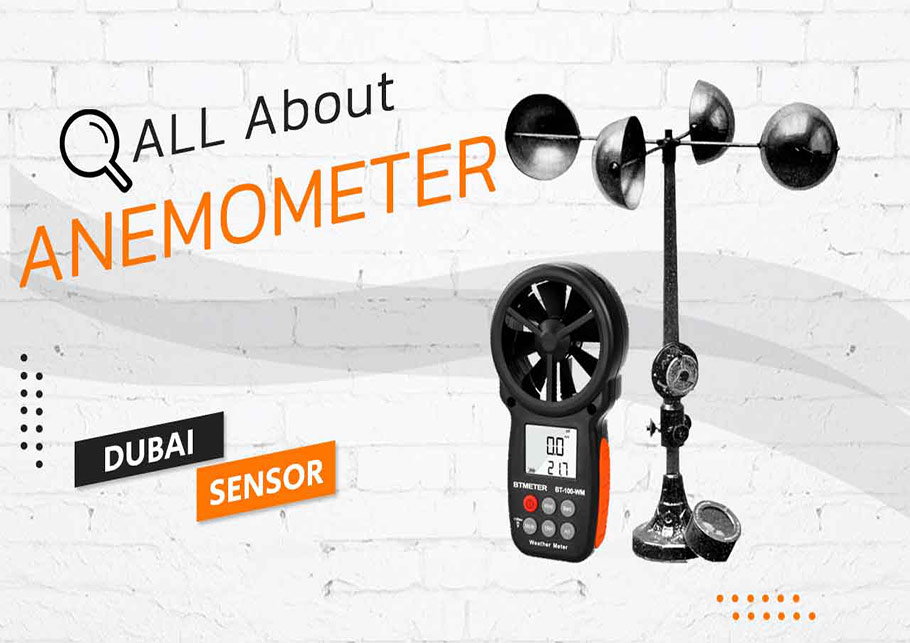Recognizing Various Sorts Of Anemometers for Numerous Applications
Wiki Article
All You Required to Learn About Anemometers: Just How They Function, Why They Matter, and Where to Use Them
Anemometers, however commonly neglected in the realm of scientific instruments, play an essential duty in numerous areas, using valuable understandings into wind rate and airflow patterns. Understanding the mechanics behind these gadgets is essential for anybody looking for to harness the power of this data. From meteorologists tracking weather condition patterns to designers making frameworks with wind tons in mind, the applications of anemometers are far-reaching and varied. As we dive into the intricacies of anemometer technology, we will reveal the inner functions of these tools, their significance, and the essential considerations when choosing the ideal anemometer for certain applications.
Anemometer Fundamentals
A vital tool utilized to gauge wind rate and instructions, the anemometer plays a critical duty in meteorology and different sectors. An anemometer generally consists of three or four mugs that turn in the wind, a vane that aims into the wind, and sensing units to track the movements or turnings.
There are different kinds of anemometers available, including cup anemometers, vane anemometers, hot-wire anemometers, and sonic anemometers, each with its distinct functions and applications. Mug anemometers are frequently utilized for fundamental wind rate measurements, while vane anemometers are favored for directional dimensions.
Concepts of Anemometer Procedure
Building on the foundational understanding of anemometer basics, the principles of anemometer procedure clarify the auto mechanics behind wind rate and instructions dimensions. Cup anemometers, for instance, have 3 or more mugs that record the wind, triggering them to spin quicker as the wind rate rises. Hot-wire anemometers rely on a heated cord that cools down as wind passes over it, with the price of cooling figuring out the wind speed.Significance of Anemometers
The relevance of anemometers in meteorology and various markets can not be overstated. Anemometers play an important function in determining wind rate and instructions, supplying necessary data for climate projecting, environment studies, environmental surveillance, and air travel procedures. Meteorologists rely upon anemometers to gather exact wind data, assisting them comprehend climate patterns, predict storms, and concern timely warnings to the general public. In industries such as building, agriculture, renewable resource, and maritime procedures, anemometers are utilized to maximize processes, make certain safety, and raise performance. Wind farm operators use anemometers to examine wind problems and make best use of power manufacturing from wind turbines. In the maritime industry, anemometers aid ship navigation by supplying real-time wind information to captains, aiding them make educated decisions to make sure secure trips. On the whole, anemometers are indispensable tools that contribute considerably to safety and security, effectiveness, and notified decision-making in meteorology and a broad array of sectors.Applications Throughout Numerous Industries
Applications of anemometers extend across varied sectors, showcasing their versatility and utility beyond meteorology. In the renewable resource market, anemometers play an important role in examining wind conditions for wind ranch positionings, making sure optimum power manufacturing. Industries like construction and mining utilize anemometers to keep an eye on wind speeds, critical for safety procedures, particularly when functioning at elevations or in open-pit mines where solid winds can position threats. see Anemometers are additionally essential in the air travel sector, aiding pilots in recognizing airspeed and wind instructions for secure liftoffs helpful hints and touchdowns. The maritime industry gain from anemometers for ship navigation, assisting sailors prepare for weather adjustments and adjust routes as necessary. In agriculture, anemometers aid farmers in handling plant splashing by supplying real-time data on wind rate to stay clear of drift. Furthermore, anemometers locate applications in cooling and heating systems to optimize airflow and boost power performance in buildings. The diverse use cases of anemometers highlight their importance across different sectors, highlighting their important function in enhancing functional safety and security and performance (anemometer).
Choosing the Right Anemometer for Your Demands
For general functions, a cup anemometer is suitable for measuring wind speed, while a vane anemometer gives wind direction data. Hot-wire anemometers are perfect for low airspeed measurements, and ultrasonic anemometers use high accuracy and longevity.
Verdict
In verdict, anemometers play a vital role in gauging wind speed and direction across numerous industries. It is crucial to consider the relevance of anemometers in order to make informed choices when choosing the most ideal gadget for measuring wind conditions.There are different types of anemometers readily available, consisting of cup anemometers, vane anemometers, hot-wire anemometers, and sonic anemometers, each with its unique features and applications. Mug anemometers are commonly made use of for basic wind speed measurements, while vane anemometers are favored for directional dimensions. Hot-wire anemometers are suitable for low airspeeds, and sonic anemometers are their explanation excellent for high-precision measurements in study and industrial settings.Structure on the fundamental understanding of anemometer basics, the principles of anemometer procedure elucidate the auto mechanics behind wind speed and instructions dimensions. For general objectives, a cup anemometer is suitable for determining wind rate, while a vane anemometer gives wind instructions information.
Report this wiki page